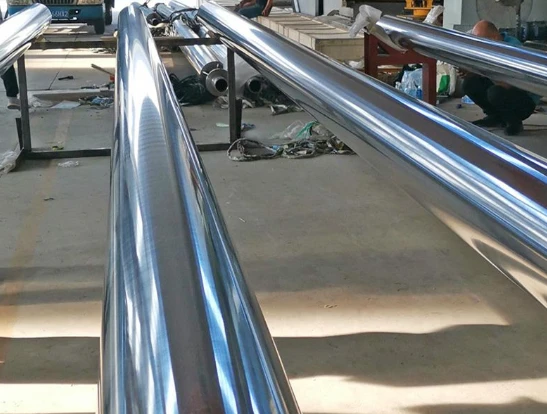
-
 Afrikaans
Afrikaans -
 Albanian
Albanian -
 Amharic
Amharic -
 Arabic
Arabic -
 Armenian
Armenian -
 Azerbaijani
Azerbaijani -
 Basque
Basque -
 Belarusian
Belarusian -
 Bengali
Bengali -
 Bosnian
Bosnian -
 Bulgarian
Bulgarian -
 Catalan
Catalan -
 Cebuano
Cebuano -
 China
China -
 China (Taiwan)
China (Taiwan) -
 Corsican
Corsican -
 Croatian
Croatian -
 Czech
Czech -
 Danish
Danish -
 Dutch
Dutch -
 English
English -
 Esperanto
Esperanto -
 Estonian
Estonian -
 Finnish
Finnish -
 French
French -
 Frisian
Frisian -
 Galician
Galician -
 Georgian
Georgian -
 German
German -
 Greek
Greek -
 Gujarati
Gujarati -
 Haitian Creole
Haitian Creole -
 hausa
hausa -
 hawaiian
hawaiian -
 Hebrew
Hebrew -
 Hindi
Hindi -
 Miao
Miao -
 Hungarian
Hungarian -
 Icelandic
Icelandic -
 igbo
igbo -
 Indonesian
Indonesian -
 irish
irish -
 Italian
Italian -
 Japanese
Japanese -
 Javanese
Javanese -
 Kannada
Kannada -
 kazakh
kazakh -
 Khmer
Khmer -
 Rwandese
Rwandese -
 Korean
Korean -
 Kurdish
Kurdish -
 Kyrgyz
Kyrgyz -
 Lao
Lao -
 Latin
Latin -
 Latvian
Latvian -
 Lithuanian
Lithuanian -
 Luxembourgish
Luxembourgish -
 Macedonian
Macedonian -
 Malgashi
Malgashi -
 Malay
Malay -
 Malayalam
Malayalam -
 Maltese
Maltese -
 Maori
Maori -
 Marathi
Marathi -
 Mongolian
Mongolian -
 Myanmar
Myanmar -
 Nepali
Nepali -
 Norwegian
Norwegian -
 Norwegian
Norwegian -
 Occitan
Occitan -
 Pashto
Pashto -
 Persian
Persian -
 Polish
Polish -
 Portuguese
Portuguese -
 Punjabi
Punjabi -
 Romanian
Romanian -
 Russian
Russian -
 Samoan
Samoan -
 Scottish Gaelic
Scottish Gaelic -
 Serbian
Serbian -
 Sesotho
Sesotho -
 Shona
Shona -
 Sindhi
Sindhi -
 Sinhala
Sinhala -
 Slovak
Slovak -
 Slovenian
Slovenian -
 Somali
Somali -
 Spanish
Spanish -
 Sundanese
Sundanese -
 Swahili
Swahili -
 Swedish
Swedish -
 Tagalog
Tagalog -
 Tajik
Tajik -
 Tamil
Tamil -
 Tatar
Tatar -
 Telugu
Telugu -
 Thai
Thai -
 Turkish
Turkish -
 Turkmen
Turkmen -
 Ukrainian
Ukrainian -
 Urdu
Urdu -
 Uighur
Uighur -
 Uzbek
Uzbek -
 Vietnamese
Vietnamese -
 Welsh
Welsh -
 Bantu
Bantu -
 Yiddish
Yiddish -
 Yoruba
Yoruba -
 Zulu
Zulu
Durable Fiberglass Tanks for Efficient Liquid Storage and Management Solutions
Understanding Fiberglass Holding Tanks Benefits and Applications
In recent years, fiberglass holding tanks have gained popularity across various industries due to their exceptional strength, durability, and versatility. These tanks are mainly used for the storage of liquids, including wastewater, chemicals, and potable water. Their distinct properties make them an ideal choice for both commercial and residential applications.
Composition and Design
Fiberglass tanks are made from a composite material consisting of glass fibers and resin. This combination results in a lightweight yet sturdy structure that can withstand harsh environmental conditions. The design flexibility offered by fiberglass allows for the creation of tanks in various shapes and sizes, accommodating different storage needs. Moreover, they can be custom-made to fit specific installation sites, which is particularly advantageous in limited spaces.
Key Benefits
1. Corrosion Resistance One of the primary advantages of fiberglass holding tanks is their resistance to corrosion. Unlike metal tanks, fiberglass does not rust or corrode when exposed to harsh chemicals or moisture. This property extends the lifespan of the tank and reduces the need for frequent replacements, leading to cost savings in the long run.
2. Lightweight Fiberglass tanks are significantly lighter than their metal counterparts, making them easier to transport and install. This advantage not only reduces labor costs but also simplifies the installation process, which can be particularly beneficial in remote or difficult-to-access locations.
3. Low Maintenance The non-porous surface of fiberglass prevents the growth of algae and bacteria, minimizing the need for regular cleaning and maintenance. This characteristic ensures that the stored liquids remain uncontaminated, which is critical for tanks used in potable water applications.
4. Environmental Impact Fiberglass holding tanks are often manufactured using environmentally friendly processes and materials. Additionally, their ability to withstand extreme temperatures and the elements means they are less likely to fail, which can prevent leaks and spills that might harm the environment.
fiberglass holding tanks

5. Cost-Effectiveness Although the initial investment for fiberglass tanks may be higher than for other types of tanks, the long-term savings in maintenance, replacement, and environmental impact make them a cost-effective choice. Their durability and low upkeep can lead to significant reductions in operational costs over time.
Applications
Fiberglass holding tanks are versatile and can be used across various sectors, including
- Wastewater Management Industries use fiberglass tanks for the storage and treatment of wastewater. Their ability to handle corrosive substances makes them suitable for this application.
- Agriculture Farmers often utilize fiberglass tanks for the storage of fertilizers and other chemicals. Their resistance to chemical degradation ensures safe storage of these materials.
- Food and Beverage Industry In the food and beverage sector, fiberglass tanks are used for the storage of liquids, as they do not leach harmful substances into consumables.
- Rainwater Harvesting With an increasing focus on sustainability, many homeowners have begun using fiberglass tanks to collect and store rainwater for various domestic uses.
Conclusion
Fiberglass holding tanks represent a modern solution to liquid storage challenges across multiple industries. Their unique benefits, such as corrosion resistance, lightweight design, and cost-effectiveness, make them an attractive option for businesses and homeowners alike. As industries continue to prioritize sustainability and efficiency, the demand for reliable storage solutions like fiberglass holding tanks is likely to grow, reinforcing their role as a vital component in liquid management systems. With the advancements in fiberglass technology and manufacturing processes, these tanks are poised to meet the evolving needs of various applications in the years to come.









